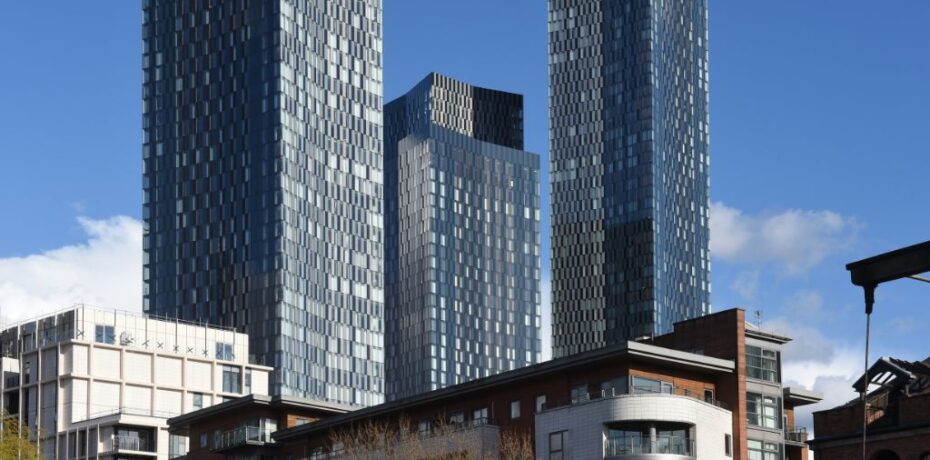The Subplot
The Subplot | Contractors on the turn, luxury homes, inflation
Welcome to The Subplot, your regular slice of commentary on the North West business and property market from Place North West’s analysis editor, David Thame.
THIS WEEK
- The great gamble: contractors flirt with becoming developers, but can North West firms manage the risk?
- Elevator pitch: your weekly rundown of what is going up and what’s not

THE GREAT GAMBLE
Can we build it? Yes, we can
The contractor-developer is back: these days everyone wants to be Renaker. Yet this is a dangerous inflationary time. Will it all end in tears, as usual?
For contractors, the prospect of becoming a developer has plenty of in-theory benefits. You cut out a dicey client relationship, you take two shares of profit instead of one, you get to control workflows in a business notorious for its ups and downs, and since you have all those property contacts, why not use them? Ambitious managers are naturally attracted to this kind of diversification. After all, they get to feel like stars rather than supporting cast in the great show that is property development.
Different worlds
The problem is that the contracting business is hugely prone to overreach and financial collapse. Worse still, the skills of a good contractor are pretty much the opposite of those of a good developer. Those who succeed as contractor-developers are either unique time-limited exceptions, like Renaker, or create largely free-standing businesses in which the horse drives the cart, and not the other way around (big smiley wave to Morgan Sindall and Muse Developments). History is littered with the corporate corpses of those who tried and failed.
Vertical integration
The idea seemed to have lost its allure until skyscraper specialist Renaker arrived. Thanks to unbelievable amounts of canniness, the guts to ride the build-to-rent wave, and a good clear head, Daren Whitaker created a contractor-developer to admire. Today, a growing list of aspirant contractors want a slice of the same pie. Last week McAleer & Rushe decided to step up its move from contractor to contractor-developer via its development business MRP. It debuted in Manchester buying CEG’s 20-36 High Street site where a 22-storey apartment scheme is planned. Others are thinking of going down the same route.
No biggie
McAleer & Rushe suggest it’s no big deal. “This is not an unusual project for our development business, both in terms of scheme type and value,” a spokesperson tells Subplot. The firm has a Great Britain regional development with an end value of £1.5bn and a development value of £300m including build-to-rent, student accommodation and offices. Current starts include student housing in Warwick and £75m speculative offices in Leeds.
Bad timing
Two issues arise. First, is this a good moment to turn developer? If a good moment would be a time when contractors were not under increasing cost pressure, the answer is no. “Additional costs, up between 5%-15% depending on the product, make it hard to appraise our pricing. The viability of projects we look at has dwindled as construction costs go up, particularly in the residential sector,” says Adrian Rooney, operating on the front line as managing director at Chadderton-based J Greenwood (Builders). Rising consumer price inflation (see below) won’t help either.
More bad timing
The background is that the lavish support offered during the pandemic has kept plenty of contractors afloat much longer than anyone expected. The end of the job support/furlough package is now pushing up the number of contractor insolvencies/administrations, a figure rising steadily since September 2021 as the sector returns to pre-pandemic levels of failure. The pre-Christmas crop included Manchester’s Artisan H2, Create Construction and LOR Contracting, Cheshire’s J.M.K. Civil Engineering and many more.
Pause and think
The second problem is one of wisdom. Mark Connor, managing director at Liverpool-based Vermont, has played on both sides of the contractor-developer fence, and he isn’t sure it’s a good idea for everyone. There are overlaps, and contracting know-how can mitigate development risks. But he isn’t keen. “Developers and contractors have completely different skill sets,” he tells Subplot. “I’ve not seen many successful examples of contractors transitioning to become successful contractor/developers and vice versa. Unfortunately, many contractors and indeed developers simply do not have the infrastructure that is able to manage these risks.”
It’s going to get interesting
“In a buoyant market I think we will continue to see contractors trying to develop schemes, and developers frantically trying to facilitate delivery of their schemes by adopting the contracting role and all associated risks,” Connor says. “The fractional sales model has exacerbated this issue with many developers trying to deliver complex projects. I’m not convinced that those developers quite appreciate the infrastructure required to deliver on this scale and It will be interesting to see what happens in the next few years in terms of this trend.”
Safety first
If Vermont’s Connor thinks the chips are stacked against contractors-turned-developers, then the region’s bread-and-butter contractors think it is madness. Back in Chadderton, Rooney says his £15m turnover family firm has no desire to follow other contractors over the edge. “I’ve looked at the development angle before, but it feels overcrowded, land prices are too high, too many people chasing from the UK and overseas, the uncertainties of planning, time and risk – it all adds up to a real distraction,” he says. Rooney suggests taking a second slice of profit is attractive, but only for a few minutes until common sense kicks in.
The appeal of the contractor-developer model will not go away, but the list of successful examples is unlikely to get much longer.
 ELEVATOR PITCH
ELEVATOR PITCH
Going up, or going down? This week’s movers
Can you feel the g-force? The North West’s bespoke luxury house development scene can, as it rockets to the penthouse. Inflation is also shooting up.
![]() Luxury homes
Luxury homes
Fancy a £6m Alderley Edge house measuring a spacious 15,000 sq ft (that’s ten times the size of a big house, twenty times the size of a small one)? Well somebody does, because it is now nearing completion, one of an increasingly large number of bespoke mega homes in a booming North West sector.
“It’s unbelievably flying,” says Max Henderson, owner of luxury construction company, Noble Projects, of a niche market boosted by high-net-worth buyers diverting their holiday spend into their homes. Volumes are up and so is the size of projects. “Our clients are more inclined to treat themselves, and the drift towards wellness encourages them. Every client wants a pool, a sauna, a seriously large gym. They want whatever they had in the holiday home in Spain.”
Big is the word. Gyms are not cubby holes with a cross-trainer, but generous spaces of up to 450 sq ft. (remember, the national standard for a studio apartment is 398 sq ft, and planners are pondering studios of just 270 sq ft). Master bedroom suites come as big as 2,500 sq ft, which would be one hell of a house on its own and probably rather bewildering. Henderson has eight live projects in the North West, with four more coming on stream, and the prospect of a lot more. Definitely, a sector to watch.
 Hell in a handcart
Hell in a handcart
How lovely it would be to put a great big down arrow next to the word “inflation.” Unfortunately, that’s not possible. Yesterday official figures showed consumer price inflation at 5.4% in the 12 months to December 2021, up from 5.1% in November. This is no surprise to anyone except the Bank of England, which has consistently under-estimated the trend, getting it wrong by an increasingly massive margin (as this chart shows). The UK has now reached a 30-year high, and inflation won’t stop here: 7% seems likely, but who knows?
It’s all great if you have debt (and remember, the government has a lot of debt just now) and net-debtors will be smiling. Property’s capacity to hedge is often wildly overstated, but it is a hedge of a kind – so there’s some comfort. But if you imagine property can hedge against a collapsing economy, go read some 1970s history. That period was also dominated by an energy crisis and a cold war (Partygate has blotted out the unfolding Ukraine drama), and the shock was all the greater because it ended a long period of prosperity in which many had forgotten what inflation did.
Get in touch with David Thame: david.thame@placenorthwest.co.uk | 01544 262127
The Subplot is brought to you in association with Oppidan Life.






Many contractor developers make the fatal mistake of appointing low grade (cheap) consultants. Design ends up subservient to build issues and this is often very evident in the final product.
Renaker fully recognise the contribution of good designers and select their consultants accordingly.
By Dave McCall